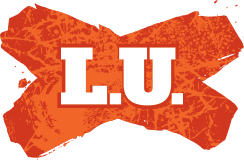THE new Australian Rugby League Commission has set an ambitious target of more than $1 billion for its TV rights. A benchmark based, no doubt, on the huge $1.25bn Australian Football League deal completed last year.
The NRL has a lot to learn from the AFL, and is looking at a similar model -- cash and contra, plus a dedicated rugby league channel on Foxtel.
The rights negotiations for the five-year contract starting next year are at an early stage, with Nine and Foxtel eager to retain them over fierce competition from Seven and Ten. It is clear they are worth nothing approaching $1bn, should stay with Nine and Foxtel and should not be split between free-to-air networks.
Not many sports are designed for television. Natural breaks in play mean more commercials can be run without disrupting the live action. The great Kerry Packer identified this for cricket, with its natural break at the end of each over, a minimum of up to 100 breaks during a one-day game.
Similarly, Australian rules football has a high number of goals kicked every game. The round 7 average was 24 goals a game (24 opportunities to run a 30-second ad) on top of three breaks a game at the end of each quarter, plus pre- and post-game segments. TV networks can monetise these breaks with banks of ads, making it more attractive to advertisers.
The NRL averages about 6.5 tries per match. This means the Nine Network can potentially run 6.5 ads per game in addition to those during half-time breaks, plus pre- and post-game coverage. This is the major problem for the NRL comparing itself with the AFL, and makes it harder for a network to pay anywhere near the AFL's $1.25bn rights. The problem is the structure of the game.
Clearly the NRL can't change the game to get it anywhere near the number of breaks that occur in the AFL, although there are some reports of plans to increase breaks. Thus, the NRL rights value should be discounted by close to 70 per cent of the AFL's, based on the number of ads that can run during play. But with Nine traditionally forcing ad breaks and the pre- and post-game hype, we have settled on a 40 per cent discount based on this model, or $750m over five years. This excludes digital rights, which should be worth about $90m to the NRL.
In today's TV landscape, leading sporting rights are worth more. They are great aggregators of audience, provide a halo effect for their networks and connect a TV network with mainstream culture. To lose that connection can be detrimental, as Ten has seen this year in Melbourne, Adelaide and Perth after losing its AFL matches.
This year, NRL ratings are up on Foxtel and Nine, the traditional home of the game. It's a good story for both networks.
The NRL can learn from the AFL. Splitting the free-to-air rights across two networks was detrimental. Now AFL is solely on Seven and 7Mate, ratings are up 25 per cent this year, partly because Seven can cross promote the games more. This means Seven has effectively gained a 25 per cent discount on the rights that it paid because ratings have exceeded forecasts.
I was wrong last year when I suggested in Media that the network had paid too much.
So the insight for the NRL is that it should not split its rights across multiple free-to-air channels.
The jewel in the crown is the State of Origin series. Think of this as three Super Bowls for the markets of NSW and Queensland. Most games average more than three million views across both markets per game -- an enormous figure. By our estimates these games are worth the premium to secure, and should be valued alone close to 15 per cent of the total rights (we are suggesting at least $22.5m per year or 15 per cent of the total rights value).
The regular Friday night double-header is a consistent ratings winner for Nine, and flexibility in scheduling allows for blockbuster games every week.
The NRL as an organisation still has a long way to go in promoting its sport for the long term. It only now has a commission to organise itself against club self-interest and politics and is still far behind the AFL for professionalism. For the NRL to want to claim $1bn for rights is way off the mark. It has to crawl before it can walk.
The NRL should stick with its existing partners who have done an outstanding job in promoting the game on their own. This rights deal should be the consolidation of relationships, so five years' time can be the springboard to greater financial reward.
The NRL is fortunate with timing in regard to the present market; Nine/Foxtel want to hold on to the rights, Seven wants to increase its dominance, and Ten is desperate to have a high-rating property outside of the underperforming Masterchef.
The NRL may be in luck to get $1bn if ego and desperation causes inflated bidding above our valuation of $750m. A golden point may be scored.
Mark McCraith is chief operating officer of Maxus
